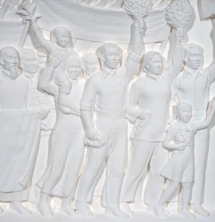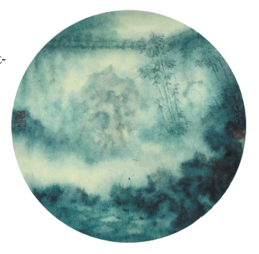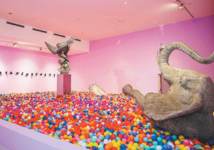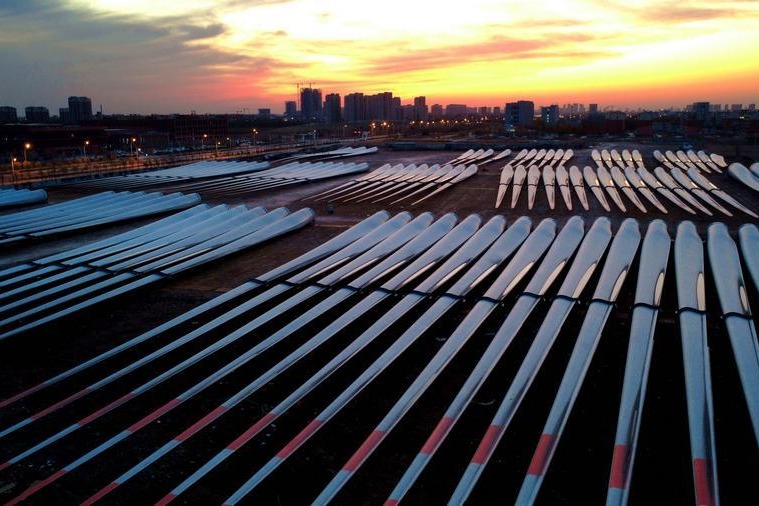What's on

Art monument

In the first half of the 20th century, groups of young Chinese went to study in France, many to learn about fine arts before becoming leading figures in the domain themselves. Among them was Liu Kaiqu (1904-93), a sculptor of note who oversaw the creation of the marble reliefs on the lower plinth of the Monument to the People's Heroes in Beijing, a major landmark that commemorates the revolutionary struggles and sacrifices made by the Chinese throughout history, and which stands in the southern part of Tian'anmen Square. The reliefs depict China's revolutionary course, and Liu carved three of them. He also served as the first director of the National Art Museum of China, which opened in 1963.
An exhibition commemorating the 120th anniversary of his birth is currently underway at the museum, with dozens of his works and those of several other sculptors who, like Liu, also studied in France in the 1920s and '30s. It presents one particular chapter in the history of cultural exchange between the two countries, during which artists of the time brought European sculptural techniques to China.
The exhibition, which runs until June 30, also displays work by artists who stayed in Europe and whose creativity benefited Chinese culture, such as Paris-based Hsiung Ping-ming (1922-2002) who rendered to his sculptures a poetic Eastern mood and philosophical take.
9 am-5 pm, closed on Mondays.1 Wusi Dajie, Dongcheng district, Beijing. 010-6400-1476.
Smaller works

Of the many art trends initiated by intellectuals in the past, one was painting and writing on fans made of paper and silk. In these limited spaces, artists were able to portray rich worlds of landscapes, animals and plants, and made these miniature worlds reflections of their emotions and thoughts. Fine examples of the kind by a number of great artists can be found in the collections of a number of museums.
The Gentle Breeze Comes By, an exhibition running until April 29 at the China National Academy of Painting, is a display of paintings and calligraphy on fans created by its resident artists, as well as other work of smaller sizes. They cover the three main genres of classical Chinese painting: mountains and water, flowers and birds, and figures, and display a brushwork brilliance that delivers aesthetic and cultural values.
9-11:30 am, 1:30-4:30 pm, daily. 54 Xisanhuan Beilu, Haidian district, Beijing. 010-6841-2606.
Shared future

Symphony of Coexistence, an exhibition at the Art Museum of the Sichuan Fine Arts Institute, is a collection of work by more than 40 artists from China and Southeast Asia that illustrates the exchange promoted by the Belt and Road Initiative. The exhibition runs until May 5.
He Guiyan, the exhibition's curator and director of the Art Museum of the Sichuan Fine Arts Institute, says it investigates the uniqueness of different cultures and regions against the backdrop of globalization, and how cultural differences are appreciated in the midst of increasing exchanges around the world.
The Sichuan Fine Arts Institute collaborates with several institutions that have been promoting art exchanges between China and Southeast Asia, including the Tang Contemporary Art gallery, which has outposts in Beijing, Hong Kong, Bangkok and Seoul. Its founder Zheng Lin says the exhibition introduces the domestic audience to the scope and diversity of Southeast Asian art, as well as its distinctiveness and creativity.
9 am-5 pm, closed on Mondays.56 Daxuecheng Nanlu, Gaoxin district, Chongqing. 177-8408-0200.
Today's Top News
- Xi taps China's deep wisdom for global good
- New rules aim for platforms' healthy growth
- Chinese web literature grows overseas
- Postgrad exam trend points to thoughtful approach
- World's highest urban wetland a global model
- How China's initiatives are paving a new path to a better world






























